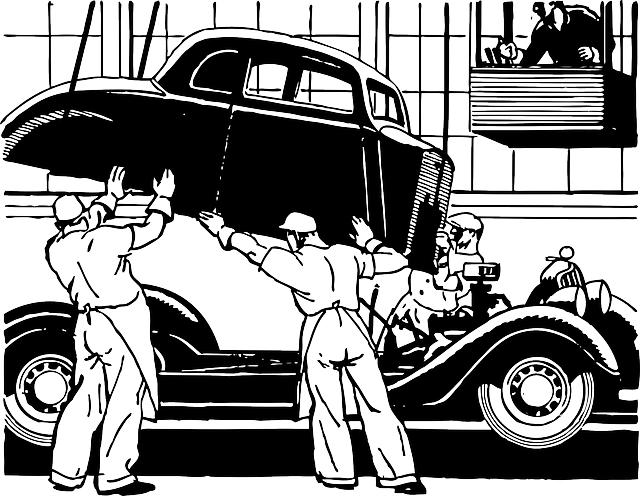Biceps Workout with Dumbbells Chart: Chart Your Bicep Progress!

Are you looking to build stronger and more defined biceps? Look no further! In this article, we will guide you through an effective biceps workout using dumbbells, and what’s even better, we’ll provide you with a handy chart to help you track your progress along the way! Whether you’re a beginner or a seasoned lifter, our informative guide will equip you with the knowledge and confidence to achieve your bicep goals. Get ready to flex those muscles and chart your success!
Contents
- 4. Maximizing Muscle Engagement: Explore techniques and variations to ensure optimal muscle activation throughout your biceps workout
- 5. Understanding Rep Ranges for Bicep Growth: Learn how different rep ranges can target specific muscle fibers and accelerate bicep development
- 6. The Importance of Proper Form: Discover how maintaining correct form during dumbbell exercises is vital for effective bicep isolation and injury prevention
- 8. Balancing Bicep Workouts with Overall Upper Body Training: Find a harmonious balance in your workout routine by incorporating exercises that complement bicep training
- Balancing Bicep Workouts with Overall Upper Body Training
- 9. The Role of Nutrition in Bicep Development: Uncover the vital role of proper nutrition in fueling muscle growth and optimizing your biceps workout results
- The Role of Nutrition in Bicep Development
4. Maximizing Muscle Engagement: Explore techniques and variations to ensure optimal muscle activation throughout your biceps workout
In order to maximize muscle engagement and get the most out of your biceps workout, it’s important to explore various techniques and variations. By incorporating different exercises and challenging your muscles in different ways, you can ensure optimal muscle activation and stimulate greater muscle growth. Here are some techniques and variations to consider adding to your biceps workout routine:
-
Isolation Exercises: Start your workout with isolation exercises that target the biceps directly, such as dumbbell curls or hammer curls. These exercises allow for focused muscle activation and help to establish a mind-muscle connection.
-
Compound Movements: While isolation exercises are important, incorporating compound movements can also be beneficial for maximizing muscle engagement. Exercises like chin-ups or bent-over rows not only target the biceps but also engage other muscle groups, leading to overall muscle development and functional strength.
-
Tempo Variation: Another way to ensure optimal muscle activation is by varying the tempo of your reps. For example, try slowing down the eccentric (lowering) phase of the exercise to increase time under tension and challenge the muscle fibers. This can be achieved by counting to three on the way down, then exploding up with maximum force.
- Supersets and Dropsets: Incorporating supersets and dropsets into your biceps workout can further enhance muscle engagement. Supersets involve performing two exercises back-to-back without rest, targeting different areas of the biceps. Dropsets, on the other hand, involve reducing the weight after reaching failure, allowing for continued muscle fatigue and promoting greater muscle fiber recruitment.
By incorporating these techniques and variations into your biceps workout routine, you can ensure optimal muscle engagement and stimulate greater muscle growth. Remember to always maintain proper form and gradually increase the intensity and weight as your muscles adapt. Keep track of your progress using our interactive biceps workout chart to stay motivated and see tangible results. Happy lifting!
5. Understanding Rep Ranges for Bicep Growth: Learn how different rep ranges can target specific muscle fibers and accelerate bicep development
When it comes to bicep growth, understanding the importance of rep ranges can make all the difference. Different rep ranges target specific muscle fibers, leading to accelerated bicep development. By incorporating a well-rounded workout routine that includes a variety of rep ranges, you can maximize your bicep gains and achieve your desired results.
Here are three key rep ranges to consider when designing your biceps workout with dumbbells:
- Low Reps (1-5): This range focuses on building absolute strength and engaging the fast-twitch muscle fibers in your biceps. By lifting heavy weights for fewer reps, you stimulate muscle growth and develop power.
- Moderate Reps (6-12): This range is ideal for hypertrophy, or muscle growth. By incorporating exercises such as dumbbell curls and hammer curls, with moderate weights and controlled movements, you can effectively target both the slow and fast-twitch muscle fibers in your biceps.
- High Reps (13+): High-rep training helps to increase muscular endurance and improve muscle definition. By using lighter weights and performing exercises like concentration curls or preacher curls with higher reps, you fatigue the muscles and promote greater blood flow, resulting in toned and sculpted biceps.
By understanding and incorporating these different rep ranges into your biceps workout, you can chart your progress and see the growth over time. Remember to gradually increase the weights as your strength improves, and always prioritize proper form to prevent injury. With consistency and dedication, your biceps will become more defined and stronger than ever!
| Rep Range | Muscle Fiber Targeted | Goal |
|---|---|---|
| Low Reps (1-5) | Fast-twitch muscle fibers | Build absolute strength and power |
| Moderate Reps (6-12) | Slow and fast-twitch muscle fibers | Achieve hypertrophy (muscle growth) |
| High Reps (13+) | All muscle fibers | Increase endurance and promote muscle definition |
6. The Importance of Proper Form: Discover how maintaining correct form during dumbbell exercises is vital for effective bicep isolation and injury prevention
Maintaining proper form during dumbbell exercises is crucial for achieving effective bicep isolation and preventing injuries. When performing bicep workouts with dumbbells, it is essential to focus on the correct technique to maximize gains and minimize strain on other muscle groups.
Here are some key reasons why proper form is vital for your bicep workouts:
1. Target the biceps effectively: By maintaining proper form, you ensure that the biceps are the primary muscles being worked. This means that you will be able to isolate and engage the biceps more efficiently, leading to better results and muscle growth.
2. Prevent injury: Using incorrect form during dumbbell exercises can put unnecessary strain on your joints and muscles, increasing the risk of injury. By paying attention to your form, you reduce the chances of overloading certain muscle groups or putting unnecessary stress on your joints.
3. Improve muscle symmetry: Proper form helps maintain balance between the left and right biceps. When you perform exercises with correct technique, both sides of your body are forced to support and lift the same amount of weight. This leads to better muscle symmetry, helping you achieve a well-balanced physique.
To ensure you are maintaining proper form during your bicep workouts, remember the following tips:
– Keep your back straight, shoulders relaxed, and core engaged throughout the exercise.
– Use a full range of motion, fully extending and contracting your biceps with each repetition.
– Avoid swinging or using momentum to lift the dumbbells. Focus on controlled movements.
– Keep your wrists straight and aligned with your forearms to prevent strain on your joints.
By prioritizing proper form in your dumbbell bicep exercises, you will maximize the effectiveness of your workouts, promote muscle growth, and reduce the risk of injury. So grab those dumbbells, follow the tips above, and start charting your bicep progress today!
8. Balancing Bicep Workouts with Overall Upper Body Training: Find a harmonious balance in your workout routine by incorporating exercises that complement bicep training
Balancing Bicep Workouts with Overall Upper Body Training
In order to build strong and defined biceps, it is essential to include exercises that not only target the biceps directly but also complement your overall upper body training. By finding a harmonious balance between bicep workouts and other upper body exercises, you can maximize your gains and avoid muscular imbalances.
1. Compound Exercises:
Include compound exercises in your routine to engage multiple muscle groups simultaneously and promote overall upper body development. Exercises such as bench press, pull-ups, and overhead press not only work your chest, back, and shoulders but also recruit the biceps as secondary muscles. This not only saves time but also ensures that your biceps receive sufficient stimulation while training other muscle groups.
2. Tricep Training:
Don’t forget to train your triceps, the muscles on the back of your upper arms, as they play a crucial role in overall arm strength and aesthetics. Strong triceps not only balance the development of your biceps, but they also contribute to the overall size and definition of your arms. Include exercises like tricep dips, close grip bench press, and tricep pushdowns to target your triceps effectively.
3. Mindful Programming:
Ensure that your workout program is designed to include enough rest and recovery time for your biceps and other upper body muscles. Allocate specific training days for your biceps while allowing ample recovery time between workouts. This way, you can avoid overtraining and injuries while optimizing muscle growth.
4. The Balancing Act:
Remember, achieving balance is key when it comes to biceps training and overall upper body development. By focusing on compound exercises, incorporating tricep training, and following a mindful programming approach, you can chart your bicep progress effectively and attain the well-rounded upper body strength you desire.
5. Chart Your Progress:
Tracking your bicep progress is a great way to stay motivated and monitor your results. Create a workout chart that includes exercises for your biceps, sets, repetitions, and the amount of weight used. Regularly update the chart and aim to increase the weight or reps over time as you become stronger. This visual representation of your progress will help you stay on track and celebrate your achievements!
9. The Role of Nutrition in Bicep Development: Uncover the vital role of proper nutrition in fueling muscle growth and optimizing your biceps workout results
The Role of Nutrition in Bicep Development
Uncover the vital role of proper nutrition in fueling muscle growth and optimizing your biceps workout results.
When it comes to building strong and defined biceps, hitting the gym and challenging yourself with various exercises is just one piece of the puzzle. Without the right nutrition, your efforts may not reach their full potential. Here’s why nutrition is a crucial factor in maximizing your bicep development:
1. Adequate Protein Intake
Protein serves as the building block of muscles, and consuming enough of it is essential for bicep growth. Make sure to include lean sources of protein, such as chicken, fish, tofu, or legumes, in each meal. Aim for around 0.8-1 gram of protein per pound of body weight to support muscle repair and growth.
2. Proper Caloric Surplus
To gain muscle mass in your biceps, you need to create a caloric surplus, meaning you consume more calories than you burn. However, it’s important to strike a balance and avoid excessive weight gain, which can lead to unwanted fat accumulation. Calculate your daily caloric needs and aim for a modest surplus of 250-500 calories to support muscle growth without unnecessary fat gain.
3. Essential Micronutrients
In addition to macronutrients like protein, getting enough essential micronutrients is vital for muscular development. Ensure your diet includes a variety of fruits, vegetables, whole grains, and healthy fats. These provide important vitamins, minerals, and antioxidants that support overall health, optimize recovery, and promote efficient muscle growth.
4. Hydration
Staying hydrated is often overlooked, but it plays a significant role in muscle function and growth. Aim to drink at least 8 cups (64 ounces) of water per day and adjust your intake based on physical activity and individual needs. Proper hydration helps transport nutrients to your muscles, reduces the risk of injury, and supports overall performance during your biceps workouts.
| Food | Protein Content (per 100g) |
|---|---|
| Chicken Breast | 31g |
| Salmon | 22g |
| Eggs | 13g |
| Greek Yogurt | 10g |
| Almonds | 21g |
By focusing not only on your workout routines but also on your nutritional choices, you can unlock the full potential of your bicep development. Remember, consistency is key when it comes to achieving your desired results. Fuel your body properly and let nutrition be your ally in sculpting those impressive biceps!
In conclusion, incorporating a biceps workout with dumbbells into your fitness routine can truly transform your arm strength and sculpt those enviable biceps. By referring to the handy chart provided, you’ll have a clear roadmap to track your progress and achieve your desired muscle growth. Remember, consistency is key, so stick to the recommended exercises and gradually increase your weights to keep challenging your biceps. With dedication and a little bit of time, you’ll soon be admiring your own impressive bicep gains in the mirror. So grab those dumbbells, follow the chart, and get ready to witness the incredible transformation of your biceps!









